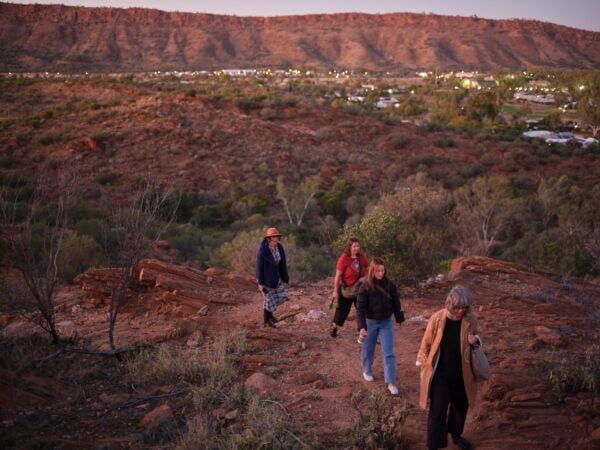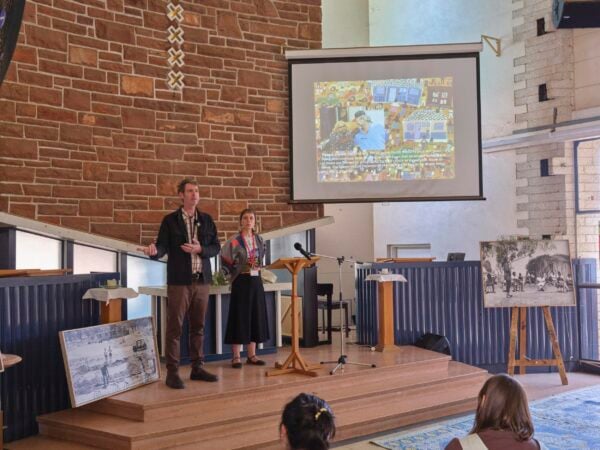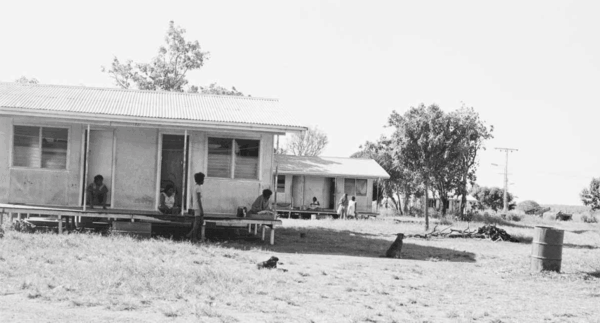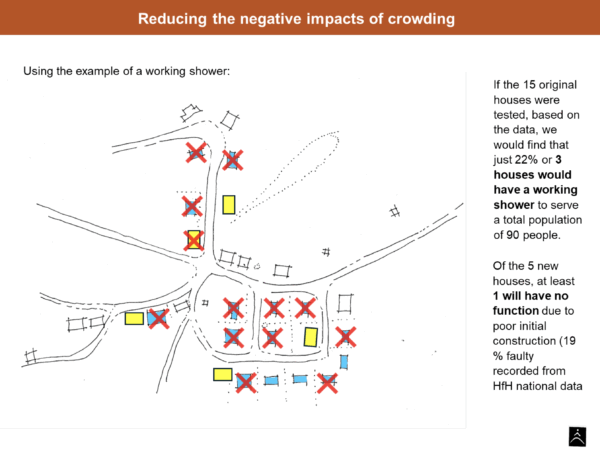CONFERENCE: Dave Donald speaks at Mparntwe Conference
HH Director speaks at Mparntwe Conference
Over three days, 11–13 September 2025, 90 people gathered in Alice Springs (Mparntwe) to attend Mparntwe: When You Come to Another Country, a conference that brought together architects, designers, planners, cultural practitioners, and community voices from across Central Australia. Organised by the Regional Architecture Association and curated by Bobbie Bayley, Owen Kelly, and Tonielle Dempers, the program wove together conversations on Country, climate, culture, design, and infrastructure, offering a grounded look at opportunities and tensions facing the region today.

The conference was held across Mparntwe Alice Springs with a sunrise walk in the Olive Pink Botanical Gardens to start the event. Photo by Tom Roe
One of the speakers was Dave Donald, Director of Healthabitat. With more than thirty years of experience working at the intersection of housing and health, he shared a series of observations and challenges drawn from the Housing for Health methodology and decades of fieldwork: the consistent message that a house that fails to function undermines the health of its occupants.

HH Director Dave Donald and NT Project Manager Bobbie Bayley at the Mparntwe Conference. Held in the centre of town in the John Flynn Church, the event spilled out into the life of the Todd street mall. Photo by Tom Roe
Dave showed archival images from the 1980s of Northern Territory houses — simple, often poorly designed, and built with limited or no health hardware. These visuals offered a benchmark of where the region began. He contrasted them with more recent housing examples to show that, yes, there has been progress — but also that many homes today still fail in key functional ways. As he put it: “We’ve come a long way — but we’re not yet there when it comes to functional housing.” That sets the tone: design and aesthetics are part of the story, but the backbone of housing must lie in consistent functionality, safety, and health.

Early housing 1950’s-1980’s was often poorly designed and built with little to no insulation, health hardware or consultation.
Dave returned to the core logic of the Housing for Health method: when infrastructure works — taps supply clean water, drainage safely disposes wastewater, showers function, electrical systems are safe — health outcomes improve. This is not new. A ten-year study showed that in communities where Housing for Health interventions were completed, hospital admissions dropped by as much as 40%, a striking demonstration of how improvements in the living environment translate into health gains.
Yet his critique was pointed: too many efforts aim at new builds, often neglecting the existing stock. Broken showers, unsafe wiring, failing drainage, kitchens that don’t work — these are daily failures that aggravate crowding and health risk. And because Aboriginal housing is always political, he framed it as a policy question: “Is the aim to build new houses, or reduce the negative impact of crowding?”
At the core of the Housing for Health approach is a rigorous, survey-and-fix method. Hundreds of “health hardware” items in each home are tested; urgent repairs are prioritised; local team members are trained; and work is done in partnership with communities. It’s a step-by-step approach, incremental yet delivering tangible change.
Dave proposed that houses should undergo a regular “rego check” — similar to the mandatory roadworthy inspections that cars must pass to remain registered and safe to drive. In the same way, a house should be periodically checked to ensure that all its essential systems are functioning, and that it is safe and healthy for its occupants.

The data shows clearly that new housing alone does not solve crowding without the on-going repar and maintenace of existing housing.
To policymakers and funders, the message is clear: directing capital predominantly toward new housing without addressing maintenance and refurbishment of existing stock undermines long-term health outcomes. The evidence is in — strategic investment in repair and function yields health dividends, often at lower cost than full replacements.
Dave’s presentation at MPARNTWE served as a bridge — an invitation for architects, planners, funders, and communities to engage with the reality behind functional housing. The challenge ahead is to align design, infrastructure, policy, and lived experience so that houses don’t just look good — they work for health.









